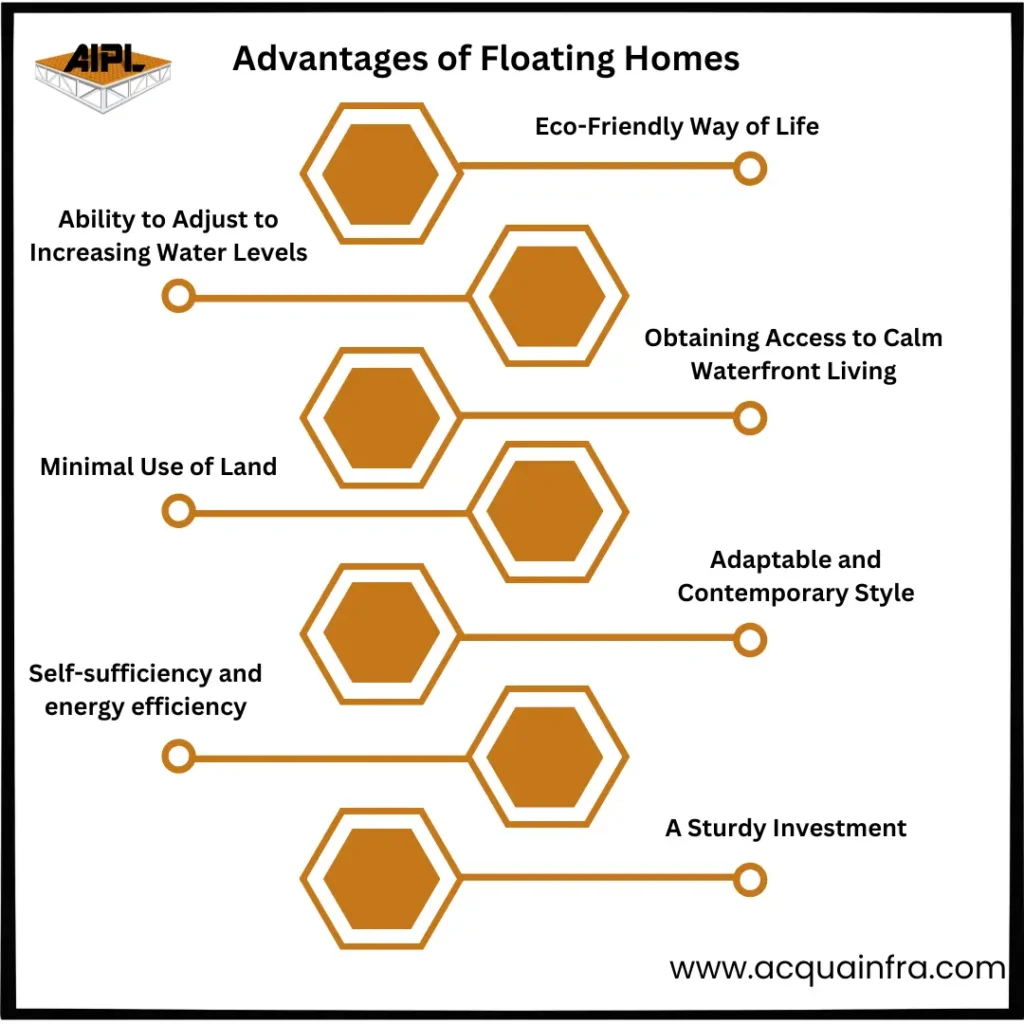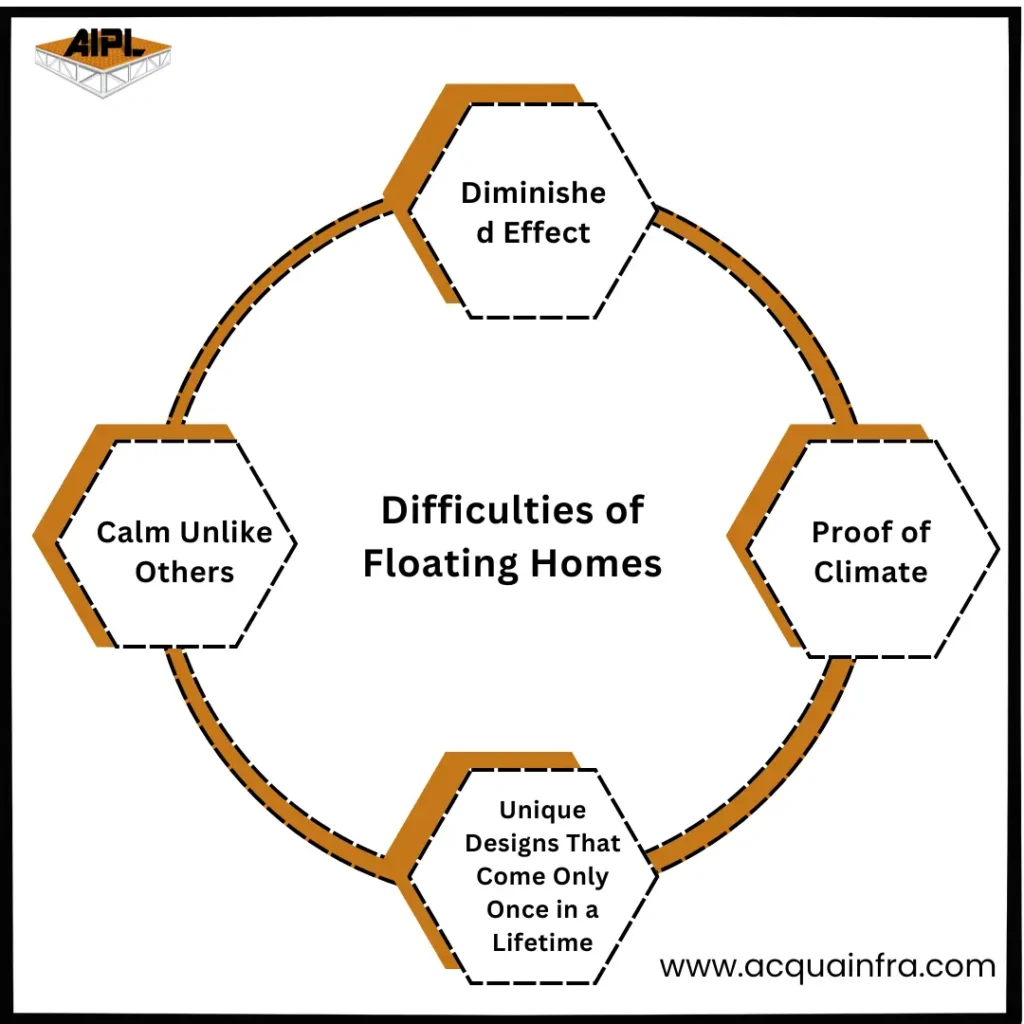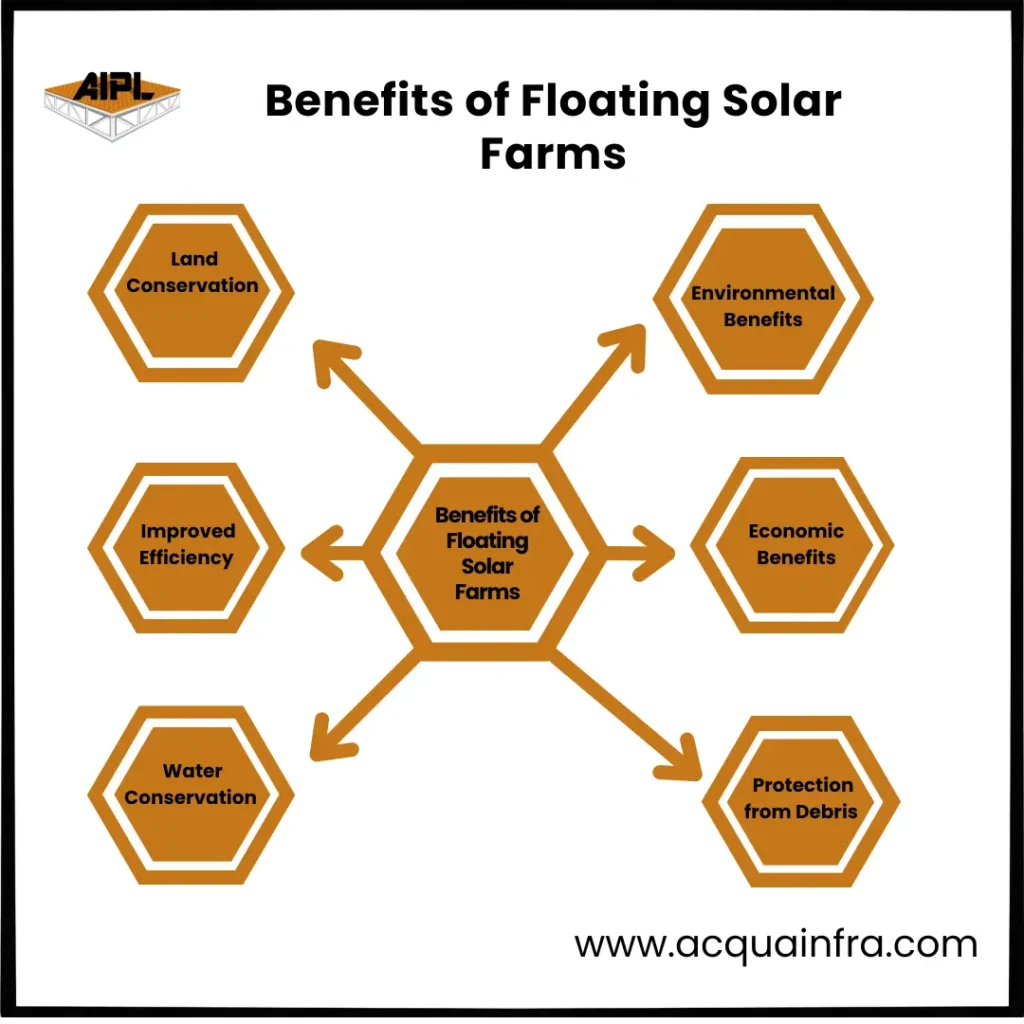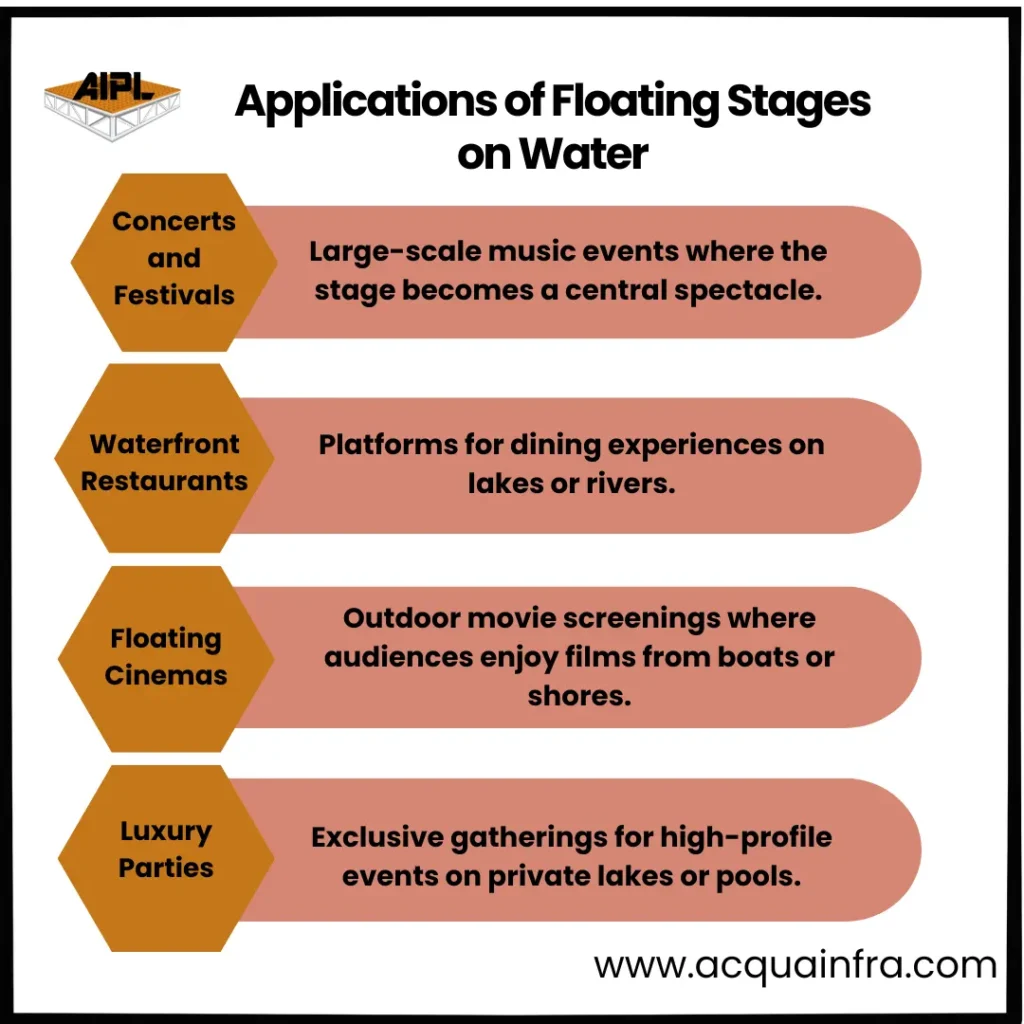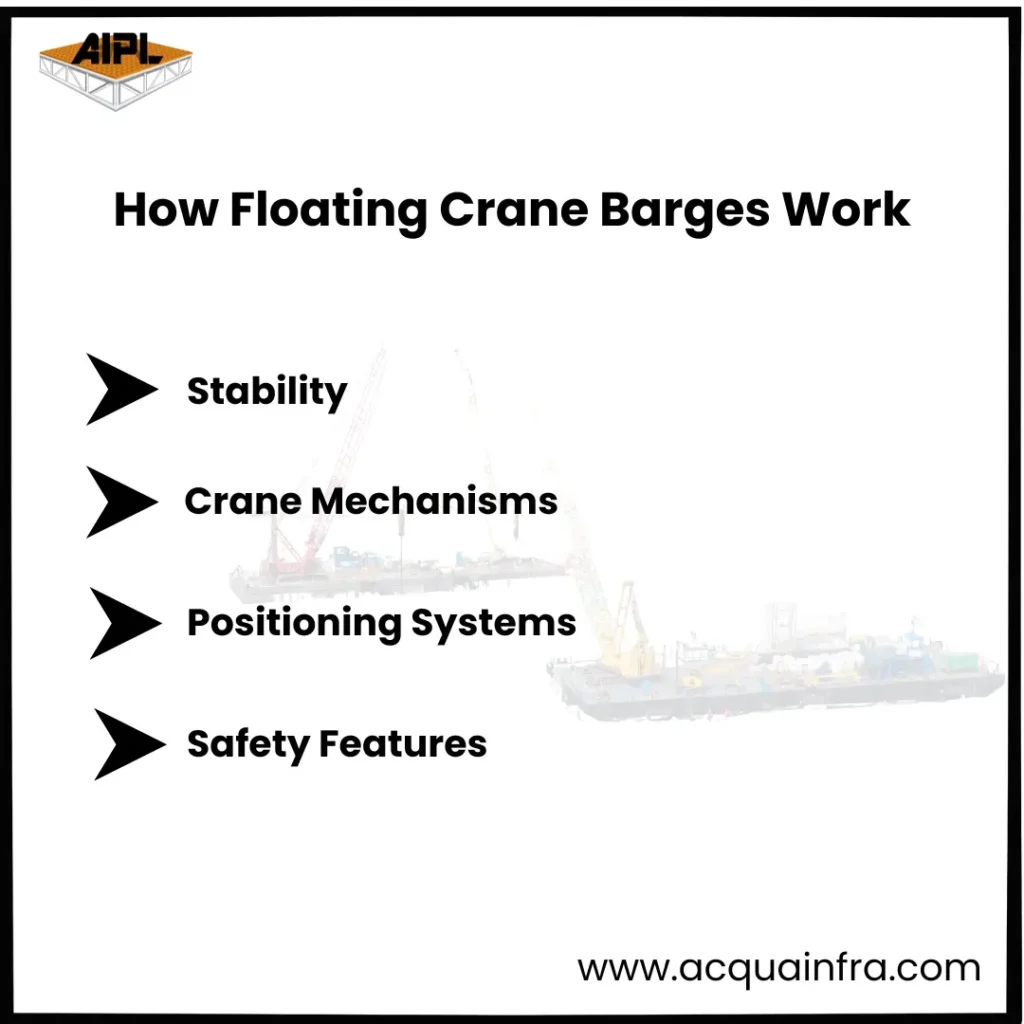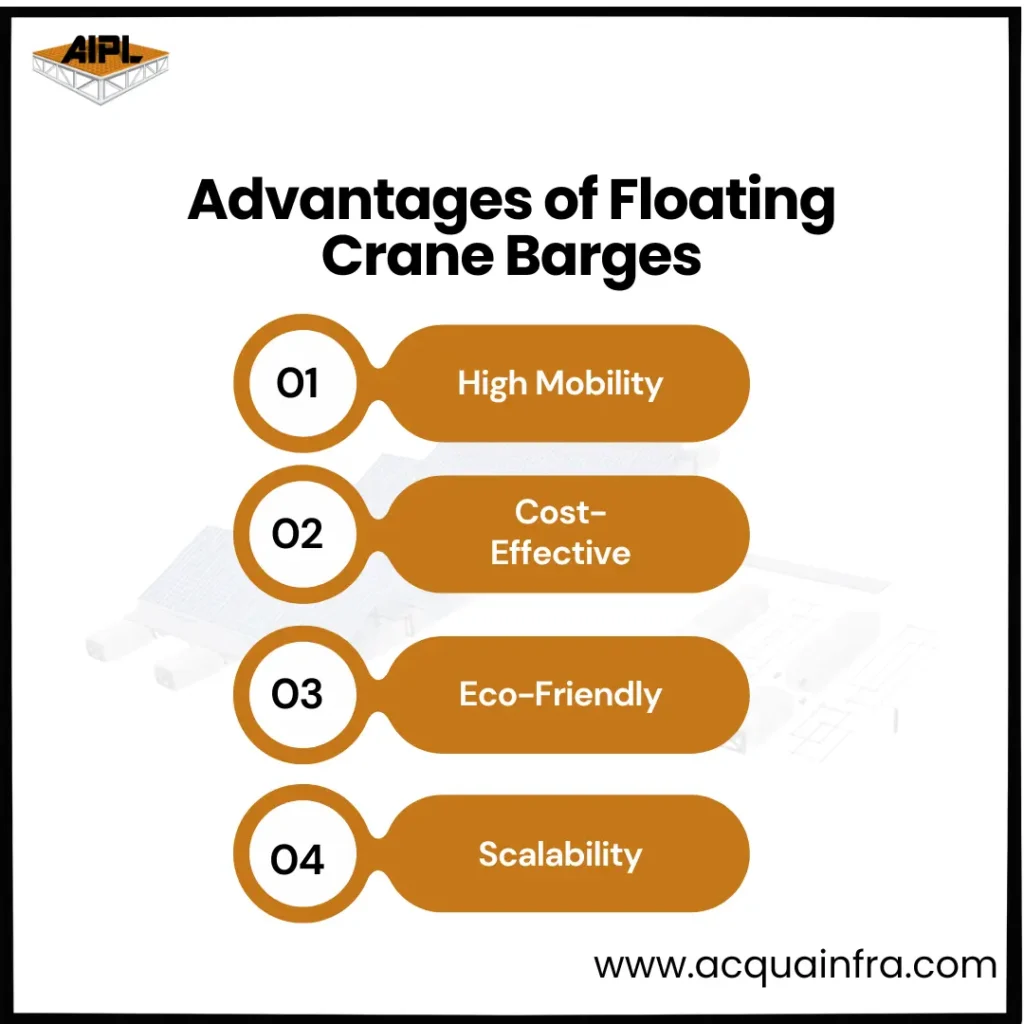Pontoon bridges were a fundamental element of the human development process that dates back to the ages of. Floating bridges anchored by pontoons or vessels are magnificent examples of temporary infrastructure that are often used for combat operations by the army, emergency response as well as construction projects. This blog will discuss their design, history and significance in the current world. In my research on the effects of infrastructure and its effect on the world, I'll also provide fascinating real-world examples that demonstrate the importance for pontoon bridges.
What is a Pontoon Bridge?
The pontoon bridge can be described as a structure constructed from floating boats or platforms which support an avenue to facilitate pedestrian, vehicle or military purposes. They are usually utilized to bridge the gap between permanent infrastructure or not necessary.
History of Pontoon Bridges
Pontoon bridges were used from the beginning of time. Notable examples include:
World Wars: Pontoon bridges were extensively utilized throughout the two World Wars for troop and moving equipment.
Persian Empire: Xerxes I was famously the first to build a pontoon bridge across the Hellespont (modern-day Dardanelles) in the year 480 BCE to conquer Greece.
Roman Era: Romans employed pontoon bridges in military operations, showing off their engineering skills.
Advantages of Pontoon Bridges
1. Quick Deployment
Pontoon bridges are simple to build and take down which makes them perfect for temporary and emergency use.
- Examples: During natural disasters such as floods, pontoon bridges offer rapid access to areas affected.
2. Cost-Effective Solution
The construction of a pontoon bridge can be considerably less expensive than building an entire bridge, particularly in the case of short-term demands.
3. Flexibility in Design
Pontoon bridges are able to be adjusted to different terrains and water conditions, allowing for flexibility in their use.
4. Military Applications
Bridges like these are essential for military operations. They allow troops and vehicles to traverse rivers and other bodies of water effectively.
5. Minimal Environmental Impact
Because they are only temporary pontoon bridges typically are less impacted on the natural environment as compared to permanent structures.
How Pontoon Bridges are Built
- Prepared: The site is studied to determine depth as well as speed of current, among other aspects.
- Pontoons A floating platform or an inflatable boat is positioned on the water, and are anchored securely.
- Decking An asphalt road is laid across the pontoons providing stability and capacity to bear loads.
- Reinforcement It is checked for safety prior to use.
Real-Life Examples of Pontoon Bridges
RMackinac Bridge (USA): A pontoon bridge that was used in its construction phase.
Bangalore Floating Bridge (India): Temporary pontoon bridges are utilized in the festival season to control the flow of people.
World War II Bailey Bridges: Pontoon-style bridges that aided soldiers during battles.
Real-Life Examples of Pontoon Bridges
Applications of Pontoon Bridges
- Military Operation: Quick troop movements during conflicts and wars.
- disaster relief: Access to information in the areas that are prone to flooding or earthquakes.
- Construction projects: Access to heavy equipment and construction workers.
- events: Used for festivals or temporary pedestrian paths over the water bodies.
What kinds of materials are used to build pontoons on bridges? The Pontoon is generally constructed from aluminum, steel or high-density polyethylene according to the load requirements.
How long will a bridge made of pontoons last? It is made for temporary use and last for just a few days up to months, based on the condition of the bridge.
Are pontoon bridges secure for vehicles with heavy loads? Yes Modern pontoon bridges have been designed to hold up heavy vehicles, but weight limits apply.
What are the drawbacks on pontoon bridges? They are impacted by strong currents and high winds and may not be suited for long-term usage.
Are pontoon bridges able to be used in urban areas? Yes, they can be commonly used in urban environments for temporary vehicle or pedestrian access
Call to Action
Ready to explore the future of sustainable living? Discover how floating houses can transform your lifestyle and help the planet. Visit our website Acquainfra to learn more about innovative water-based solutions. Let’s build a greener tomorrow—together!
About the Author
Mr. Ankit Patel, Director & CEO.
- Industrial expertise in Business Development, Operations, Finance & Administration, and Product development.
- Navkriti Medal issued by Indian Institute of Technology (BHU), Varanasi.
- National Meritorious Innovation Award 2018 by NRDC (A DST Enterprise) presented during Innovate India conference 2019 at EDII, Ahmedabad.
- Recognised for groundbreaking innovation with patent no. 485553 in the Marine Industry
Floating solar farms, also known as Floating Photovoltaic (FPV) systems, are a groundbreaking solution to the world’s increasing energy demands. Installed on water bodies, they reduce land usage, conserve water, and generate clean electricity efficiently. As the world looks for sustainable solutions.
Why Choose a Floating House?
- Eco-Friendly Living
Floating houses use sustainable materials and renewable energy, reducing their environmental impact. They integrate features like solar panels, rainwater harvesting, and natural ventilation.
- Scenic Serenity
Living on water offers an unmatched connection to nature. Whether on a serene lake or a vibrant river, floating homes provide breathtaking views and a sense of calm.
- Water Conservation
By covering water bodies, these farms reduce evaporation, conserving water for agricultural and drinking purposes.
- Environmental Benefits
Reduction in carbon footprint by generating renewable energy.Prevention of algae growth by blocking sunlight penetration into the water.
- Economic Benefits
Despite higher initial costs, offer long-term savings through efficient energy production and minimal land-use costs.
Benefits of Floating Solar Farms
Challenges of Floating Solar Farms
- Initial Investment: The initial cost of building a floating solar farm is higher than a land-based one due to the additional infrastructure required.
- Maintenance and Repair: Maintenance and repair activities can be more complex and costly for floating solar farms.
- Environmental Impact: Proper planning and environmental assessments are crucial to minimize any potential negative impact on aquatic ecosystems.
Global Examples
- China: Home to the world’s largest floating solar farm on a flooded coal mine in Anhui Province.
- India: Major projects in Kerala and Maharashtra showcase their potential in tropical climates.
- Japan: Pioneering smaller installations on reservoirs to meet local energy need
Why Farm Owners Should Consider Floating Solar Farms
For farm owners, floating solar farms offer a dual benefit:
- Utilize unused water bodies to generate energy.
- Save water for irrigation by reducing evaporation.
Additionally, government subsidies and tax benefits for renewable energy projects make this an attractive investment for agricultural businesses.
Integrating GFRC Solar Beams and Floating Concrete into Floating Solar Farms
To further enhance the efficiency and durability of floating solar farms, innovative materials like GFRC Solar Beams (Glass Fiber Reinforced Concrete) and floating concrete are being adopted. GFRC Solar Beams are lightweight, highly durable, and resistant to environmental factors such as corrosion and UV radiation. These beams provide robust support for solar panels, ensuring long-term stability and performance.
Similarly, concrete platforms offer unparalleled strength and resilience, making them an ideal choice for construction. Their buoyancy and ability to withstand harsh weather conditions make them a game-changer in renewable energy infrastructure. By incorporating these advanced materials, floating solar farms can significantly reduce maintenance costs, extend operational life, and ensure eco-friendly energy production on a larger scale.
Adding such cutting-edge innovations to the floating solar farm design reinforces the global transition toward sustainable energy solutions.
Frequently Asked Questions
What are the environmental impacts of floating solar farms? Properly designed and implemented floating solar farms can have minimal environmental impact. In fact, they can help reduce water evaporation and improve water quality.
Are floating solar farms more efficient than land-based solar farms? While both types of solar farms have their advantages,can often be more efficient due to the cooling effect of water, which can improve panel performance.
Conclusion
Promising step toward a sustainable future. By utilizing underused water surfaces, they address land scarcity, boost energy efficiency, and provide economic benefits. Whether you're an energy enthusiast or a farm owner, exploring this innovative solution is a step toward a cleaner, greener planet.
Call to Action
Ready to explore the future of sustainable living? Discover how floating houses can transform your lifestyle and help the planet. Visit our website Acquainfra to learn more about innovative water-based solutions. Let’s build a greener tomorrow—together!
About the Author
Mr. Ankit Patel, Director & CEO.
- Industrial expertise in Business Development, Operations, Finance & Administration, and Product development.
- Navkriti Medal issued by Indian Institute of Technology (BHU), Varanasi.
- National Meritorious Innovation Award 2018 by NRDC (A DST Enterprise) presented during Innovate India conference 2019 at EDII, Ahmedabad.
- Recognised for groundbreaking innovation with patent no. 485553 in the Marine Industry
Imagine attending a concert or a wedding with the stage gliding on water, creating a breathtaking blend of nature and human innovation. Floating stages on water are transforming the way we experience events, offering a stunning visual appeal and unmatched versatility. These floating marvels are more than just event platforms; they are a fusion of engineering brilliance and artistic imagination, making them the future of event venues.
In this blog, we will explore the world of floating stages, their construction, applications, features, and why they are becoming the go-to solution for modern events.
The Magic Behind Floating Stages: A Blend of Art and Engineering
Floating stages are specially designed platforms that rest on water, offering a stable and safe foundation for events. These stages combine advanced engineering techniques with aesthetic designs, allowing them to hold significant weight while seamlessly integrating with their aquatic surroundings.
The construction involves the use of modular mild steel pontoons, which ensure stability and durability—this combination of science and creativity results in stages that are not only functional but also captivating.
Beyond the Concerts: Diverse Uses of Floating Stages
Their versatility makes them suitable for various events, such as:
Weddings and Private Celebrations
Host unforgettable weddings or parties with a stage set against a scenic water backdrop.
Corporate Events
Impress clients and employees with unique venues for product launches, conferences, or award ceremonies.
Cultural and Artistic Performances
Perfect for theatre, dance, or light shows where the stage itself becomes part of the artistic narrative.
Sports and Recreational Events
Ideal for water sports award ceremonies or as a platform for on-water activities.
Community Gatherings
Great for outdoor movie nights, local festivals, or community concerts.
The Environmental Benefits of Floating Stages: A Sustainable Choice
Floating stages are an environmentally friendly alternative to traditional venues, as they require minimal land use and construction impact. Here are some of the sustainability benefits:
- Preservation of Natural Land
Since they are constructed on water, floating stages do not require deforestation or land excavation.
- Reusable and Modular Design
The modular components can be reused for multiple events, reducing waste.
- Eco-Friendly Materials
Many floating stages are built with recyclable materials, further minimizing their environmental footprint.
How Floating Stages on Water Are Constructed
The construction process for floating stages involves several key steps:
- Design and Planning
Engineers and architects design the stage based on event requirements, audience size, and water conditions.
- Assembly of the Structure
Modular components are assembled to create a sturdy platform that can hold equipment, performers, and audiences.
- Anchoring System
The stage is anchored using cables, weights, or mooring systems to keep it secure in one place.
Customizations
Additional features like lighting, sound systems, and decorative elements are integrated to meet the event’s needs.
Applications of Floating Stages on Water
Key Features of Floating Stages
- Stability and Safety
Engineered to remain stable even in turbulent water conditions.
- Customizable Sizes and Shapes
Built to fit any event requirement, from small gatherings to large-scale festivals.
- Durability
Made with materials that withstand weather elements and prolonged water exposure.
- Easy Installation and Dismantling
Modular designs allow quick assembly and disassembly, saving time and costs.
- Aesthetic Appeal
Designed to enhance the visual experience of any event.
Challenges in Building and Maintaining Floating Stages
While floating stages are innovative, they come with unique challenges:
- Weather Conditions
Storms, high winds, and strong currents can pose risks to stability.
- Material Durability
Prolonged exposure to water can lead to wear and tear without proper maintenance.
- Cost Considerations
The initial investment can be high due to specialized materials and designs.
- Logistical Challenges
Transporting and setting up the stage at remote or large water bodies can require meticulous planning.
Why Choose Acquafront Infrastructure for Floating Stage Requirements?
Acquafront Infrastructure specializes in designing and building floating structures that are reliable, durable, and visually stunning. Here’s why they are the perfect choice for your floating stage needs:
Customized Designs
Tailored to meet your event’s unique requirements, ensuring functionality and aesthetics.
- Premium Quality Materials
Use of top-grade materials ensures long-lasting performance and safety.
- Expert Team
A skilled team of engineers and designers who understand the nuances of floating infrastructure.
- Comprehensive Services
From design to installation and maintenance, Acquafront Infrastructure offers end-to-end solutions.
- Eco-Friendly Focus
Commitment to sustainability by using environmentally responsible practices.
The Future of Floating Stages on Water
Floating stages are not just a trend; they represent the future of event venues. With advancements in technology, these stages will become smarter, incorporating features like automated anchoring, enhanced acoustics, and energy-efficient lighting.
Conclusion
Floating stages on water represent a new era in event planning, offering unmatched versatility, sustainability, and visual appeal. Whether for concerts, weddings, or corporate events, they provide an unforgettable experience for audiences.
Acquafront Infrastructure is your trusted partner for creating customized, high-quality floating stages tailored to your needs. Let us help you bring your vision to life and make your next event truly extraordinary.
About the Author
Mr. Ankit Patel, Director & CEO.
- Industrial expertise in Business Development, Operations, Finance & Administration, and Product development.
- Navkriti Medal issued by Indian Institute of Technology (BHU), Varanasi.
- National Meritorious Innovation Award 2018 by NRDC (A DST Enterprise) presented during Innovate India conference 2019 at EDII, Ahmedabad.
- Recognised for groundbreaking innovation with patent no. 485553 in the Marine Industry
Frequently Asked Questions
What types of events can use floating stages? Floating stages are versatile and can host concerts, weddings, corporate events, cultural performances, and recreational activities.
How are floating stages anchored and secured in water? They are anchored using cables, weights, or mooring systems to ensure stability, even in dynamic water conditions.
Are floating stages safe for large crowds? Yes, floating stages are engineered to handle significant loads safely, with thorough testing and quality materials.
What is the cost of building a floating stage? The cost depends on factors like size, materials, customizations, and location. Contact Acquafront Infrastructure for a tailored quote.
How long can a floating stage remain in water? With proper maintenance and durable materials, floating stages can last for years, even with continuous use.
Which company makes floating stages on water in India? Acquafront Infrastructure is a leading provider of floating stage solutions in India, offering innovative and high-quality designs.
Floating crane barges are essential in modern marine and offshore operations, combining mobility, strength, and versatility to handle heavy lifting tasks. These barges support critical infrastructure development, salvage missions, and renewable energy projects, making them an indispensable tool in water-based industries.
In this blog, we’ll explore floating crane barges in-depth, highlighting their types, applications, operational features, and why they are crucial for marine engineering.
What Are Floating Crane Barges?
Floating crane barges are large, flat vessels equipped with cranes designed to perform heavy lifting in aquatic environments. Unlike traditional cranes on land, these floating platforms provide mobility, enabling efficient operations even in hard-to-reach locations.
Why Floating Crane Barges Are Vital for Marine Construction
Floating crane barges revolutionise how heavy equipment and materials are handled in water:
- Mobility: Easily transported to different locations for diverse projects.
- Efficiency: Combines lifting, transport, and placement into a single solution.
- Accessibility: Works in deep seas, rivers, harbours, and shallow waters.
How Floating Crane Barges Work
Floating crane barges utilize innovative designs and systems to perform operations:
- Stability: Achieved through wide, flat bases and ballast systems to counteract loads.
- Crane Mechanisms: High-capacity hydraulic or electric cranes mounted securely on the deck.
- Positioning Systems: Dynamic positioning (DPS) or anchoring systems ensure precise placement.
- Safety Features: Load monitoring sensors, emergency brakes, and alarms enhance operational safety.
Types of Floating Crane Barges
Floating crane barges are categorized based on their functionality and design:
- Sheerleg Barges:
- Heavy-duty fixed cranes for lifting extremely heavy loads.
- Ideal for bridge construction and ship salvage.
- Multipurpose Barges:
- Flexible design for varied tasks like piling, dredging, and logistics.
- Commonly used in ports and construction sites.
- Jack-Up Barges with Cranes:
- Equipped with legs that can be lowered to stabilize the barge in shallow waters.
- Used in offshore wind and oil projects.
Applications of Floating Crane Barges
Floating crane barges have a wide range of uses:
- Bridge Construction: Transporting and placing large steel beams or concrete sections.
- Offshore Energy: Installing wind turbines, oil platforms, and pipelines.
- Ship Salvage: Recovering sunken vessels or large debris from the ocean floor.
- Port Operations: Loading and unloading cargo from ships.
- Dredging Support: Assisting in clearing and deepening waterways.
Key Advantages of Floating Crane Barges
Safety Protocols in Floating Crane Barge Operations
Safety is critical in operations involving:
- Regular Maintenance: Ensures all components are in optimal condition.
- Weather Monitoring: Operations are halted during adverse weather to prevent risks.
- Crew Training: Operators undergo extensive training in crane handling and emergency protocols.
- Load Monitoring: Systems track and regulate the weight being lifted.
Integration of Floating Crane Barges with Marine Infrastructure
Floating crane barges often collaborate with other marine equipment:
- Tugboats: For towing barges to project sites.
- Pipelines: Laying and maintenance of underwater pipelines.
- Specialized Platforms: Working alongside oil rigs or renewable energy structures.
Technological Innovations
- AI-Driven Systems: Automates positioning and lifting tasks for greater precision.
- Energy Efficiency: Hybrid or fully electric crane barges reduce environmental impact.
- Remote Operations: Enables control of cranes from a safe distance.
- Smart Sensors: Tracks real-time conditions for improved safety and efficiency.
How to Choose the Right Floating Crane Barge for Your Needs
Choosing the right floating crane barge is essential to ensure the success of your marine construction or heavy lifting project. Selecting the right equipment depends on several factors. Here’s how to make the right choice:
- Project Requirements: Determine the size and weight of the materials to be lifted, the reach required, and the environmental conditions (such as water depth, weather, and tides).
- Barge Capacity: Make sure the crane barge you choose can handle the required load weight and has the proper lifting capacity. Each crane barge comes with specific load limits, so selecting one that can support your needs is critical.
- Water Conditions: The type of water (shallow, deep, or offshore) impacts the barge you’ll need. For deep-sea operations, a larger and more stable barge may be required, while for shallow waters, a smaller, more maneuverable one may be sufficient.
- Mobility and Stability: Consider how easy it will be to maneuver the barge. Some barges come with advanced positioning systems that allow for precise placement, even in challenging conditions.
- Maintenance and Support: Look for cranes that are easy to maintain and come with good technical support. Equipment reliability plays a key role in reducing downtime during operations.
Maintenance Tips for Prolonging the Lifespan
Floating crane barges are built to withstand tough marine conditions, but regular maintenance is crucial to ensure their longevity and optimal performance. Here are key maintenance tips:
- Regular Inspections: Conduct regular checks on the crane's structural integrity, hydraulic systems, and the barge’s floating platform to detect any early signs of wear and tear.
- Cleaning: Regularly clean the crane barge to remove salt, algae, and debris, as these can cause corrosion over time. Pay attention to the crane’s moving parts and hydraulic components, as they can be particularly vulnerable.
- Lubrication: Ensure all moving parts are well-lubricated to prevent friction and damage. This includes the crane's joints, winches, and other mechanical components.
- Check the Stability: Periodically test the barge's stability, especially when heavy loads are being lifted. Keep track of the load limit and ensure the barge is well-balanced to avoid any instability.
- Hull Inspection: Regularly inspect the hull for any cracks or damage. If you notice any issues, get them repaired immediately to prevent leaks or structural failure.
- Hydraulic System Maintenance: Keep the hydraulic system in top condition by checking fluid levels, replacing filters, and ensuring that no leaks are present.
Why Choose Acquafront Infrastructure for Floating Crane Barges?
Acquafront Infrastructure offers cutting-edge floating crane barge solutions tailored to your project needs.
- Custom Designs: Tailored to specific project requirements.
- State-of-the-art technology: Incorporates the latest advancements for enhanced performance.
- Expertise: A team with extensive experience in marine infrastructure.
- Sustainability Focus: Designs that minimize environmental impact.
- End-to-End Support: From planning to deployment and maintenance.
Future Trends in Floating Crane Barge Operations
The future of floating crane barges includes:
- Increased Automation: Fully automated cranes for faster, safer operations.
- Eco-Friendly Solutions: Solar-powered systems and reduced emissions.
- Larger Load Capacities: To handle next-generation marine construction needs.
- Global Expansion: Broader applications in developing offshore infrastructure worldwide.
Conclusion
Floating crane barges are a vital innovation in marine infrastructure, offering unmatched precision, mobility, and efficiency for heavy lifting and construction projects on water. From building bridges to supporting offshore wind farms, these versatile vessels are reshaping the possibilities of water-based operations.
With advancements in technology and a growing focus on sustainability, the future of floating crane barges is promising, ensuring safer and more environmentally friendly solutions for industries worldwide.
By partnering with experts like Acquafront Infrastructure, you gain access to cutting-edge designs, expert consultation, and reliable support to ensure your marine projects are executed flawlessly.
About the Author
Mr. Ankit Patel, Director & CEO.
- Industrial expertise in Business Development, Operations, Finance & Administration, and Product development.
- Navkriti Medal issued by Indian Institute of Technology (BHU), Varanasi.
- National Meritorious Innovation Award 2018 by NRDC (A DST Enterprise) presented during Innovate India conference 2019 at EDII, Ahmedabad.
- Recognised for groundbreaking innovation with patent no. 485553 in the marine Industry.
Frequently Asked Question
What is the maximum weight a floating crane barge can lift? Depending on the type, they can lift up to 10,000 tons or more.
Are floating crane barges safe to operate? Yes, with advanced safety systems like load sensors, alarms, and trained operators, they are highly secure.
Can floating crane barges be used in deep seas? Yes, certain designs are suited for both shallow and deep-water operations.
What industries use floating crane barges? Marine construction, renewable energy, oil and gas, and port operations rely heavily on these barges.
How can I acquire a floating crane barge? Acquafront Infrastructure offers rental and purchase options for custom-built crane barges.
